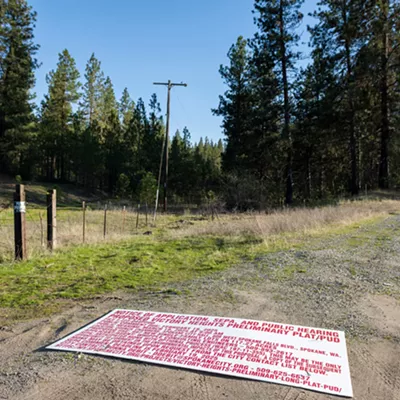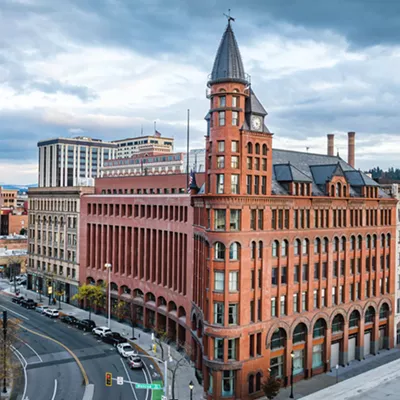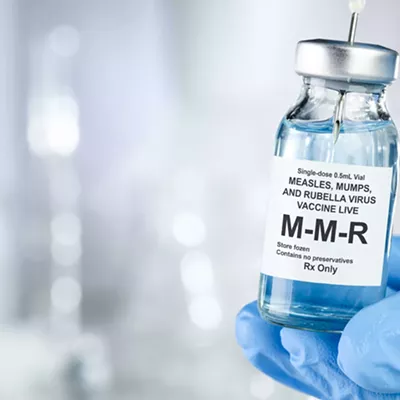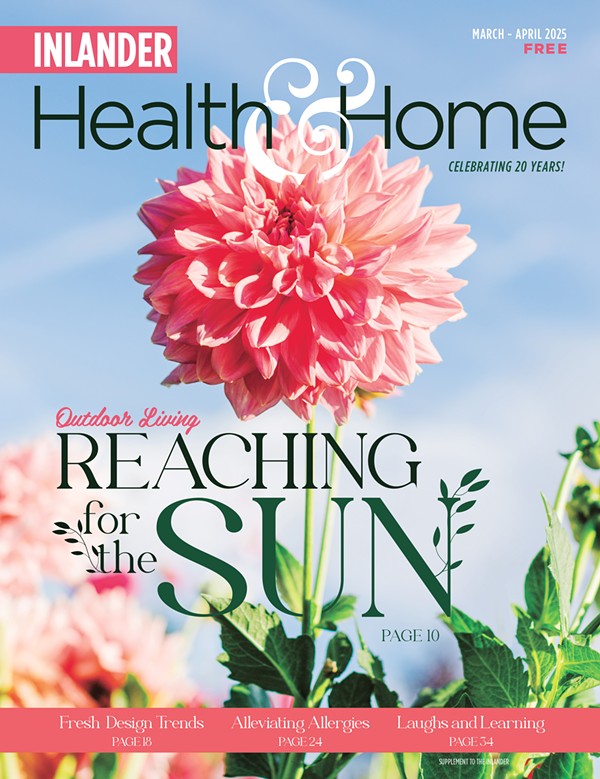I am a newcomer to Spokane, which gives me fresh eyes and a little naivet & eacute;. Over a couple of years, from my evenings outdoors and around town, and from my days spent renovating an old house in Browne's Addition -- transforming it from a ravaged shell to something functional and beautiful -- I've developed an image of Spokane's future.
I propose to take the shell we have here in Spokane, with its history and location, its people and resources, and make the best from it. It's time to recognize what is beautiful, what has promise and what we need to replace, but first we need a vision. These ideas are just a start.
Before discovering Spokane, I had moved all over America. Spokane is a place unmatched in its unique confluence of natural and cultural forces. The Spokane people knew it, the Olmsted brothers recognized it at the turn of the last century, and now I'm wondering if anyone wants to make this place great!
To that end I've envisioned a timeline of events:
2004 -- The fireworks of First Night kick off the new year with a series of week-long seasonal festivals, SpringFest will be the first, spanning Bloomsday and the Lilac Festival with an arts and crafts fair at the convention center. Galleries will be open around town with nightly music, food and entertainment.
Regional filmmakers and digital artists are excited by the announcement of AutumnFest's theme, Art in the Modern Media. It is intended to complement SpringFest, one festival hailing to our rustic roots while the other explores the future,
Throughout the spring, work on the Great Gorge Park has been underway, connecting downtown to People's Park, with a bridge completing the Centennial Trail. Work is also being done to link People's Park to the adjacent High Bridge conservation area and the western lot which is to become Spokane's downtown sports fields. (For details, visit www.friendsofthefalls.org or www.spokanecentennialtrail.org.)
SummerFest builds on the successes of Hoopfest and the Fourth of July with a celebration of the great outdoors. A kayaking exhibition is taking place on the future whitewater park site, along with a climbing wall and canoeing. An outdoor expo draws thousands to the convention center with booths full of opportunities and equipment, a carnival fills the park with music lingering into the night accompanying fireworks and a finale shot from the Riverfront Park Clock Tower. Spokane's renaissance has begun with a bang and a celebration is in order.
As autumn arrives, Spokane savors the talents of local digital artists in cinemas, galleries and street windows. Unseen are the hubs being placed around town to cover Spokane with 21st-century wireless communications, while beneath the streets, the existing optic fiber network is being brought to life with affordable gigabit connectivity.
Later in the fall, individuals and organizations meet to plan the future medical school of the Inland Northwest, while across town the resurrection of Spokane College is beginning, fulfilling Spokane's need for an affordable four-year city college.
2005 -- As the successes of 2004 are savored, the transit system that will keep Spokane moving into the 21st century is underway, the east-west trolley route is set to break ground, and already the North Side and South Hill/Hospital area are clamoring for a North-South extension. The trolley will not only provide a transportation option to car drivers but also essential mobility to the young, the old and the disabled.
Around town, many other projects are underway. At Riverfront Park, the ice rink is being enclosed, the Imax Theater refurbished and the Expo dome re-skinned. These projects bring icons of the city's successes back to life, ending decades of decline.
Downtown shoppers are lining up for the grand opening of a permanent farmers' market, while the Cowles development group has transformed the windowless brick building across from River Park Square into a showcase of the region's finest arts, crafts, foods, and goods.
The year ends with announcement of the groundbreaking for Spokane's medical school.
2010 -- The downtown renaissance is unmistakable. Old buildings have been saved from the wrecking ball and restored. New construction is transforming weed-choked parking lots into homes for new businesses and people. Employment is growing, with thousands now living in the thriving downtown core, hopping trolley rides to west-side green spaces for picnics at People's, walks through Highbridge and games at the "Fields." The north-south trolley route is complete, with riders hopping from the medical center and Manito Park across the river to the reviving North Side loft area, or connecting to the light rail running from downtown to Spokane Valley and Liberty Lake.
The North Side Science Museum is now underway, as the long-barren Summit property to the west has been developed. Gonzaga has continued to succeed, helping the University District, with the school's reputation and prominence growing in academics as well as on the court. Across the river, the WSU and EWU campuses have more than doubled in size, with the architectural design center becoming a multimedia design and arts hub, turning out talented graphic and visual artists as well as architects and designers. The school's medical facilities have expanded as medical and biotechnology continue to flourish. Meanwhile, WSU's decision to locate its applied business programs to Spokane has been a huge success, incubating small businesses and increasing the university's prominence.
The Natatorium, a park from Spokane's past, is being reconstructed as a wave pool adjacent to the YMCA and River Park Square. It now provides the downtown a center for fun and fitness as well as drawing tourists from around the region.
The Great Gorge Park now connects with Riverside State Park. Work is underway to connect it out to Mount Spokane and Post Falls.
2020 and beyond -- The Spokane River is cleaned up. The fisheries are flourishing with trout and native species, and bald eagles glide through the air. The Gorge Park now connects to Spokane along the Little Spokane, then reaches out to Post Falls past Newman Lake. Light rail now reaches from the airport to Coeur d'Alene, while high-speed trains are just beginning to link the cities of the Northwest together. Two-hour hops to Seattle and Portland are now possible and convenient.
One of the most popular new projects is the so-called zoo, though it's more an ecological preserve, an "Eco-Park" connecting the people of the Inland Northwest to the natural splendors of the entire Earth.
If this vision is fulfilled, Spokane will become a world-class city that doesn't attempt to be the biggest at what it does, just the best. Then Spokane will truly be focused on its quality of life, community, opportunity and unique position at the confluence of nature and culture.
Anyone interested?
James Jarvis moved to Spokane from Denver two years ago.
Publication date: 12/04/03
















